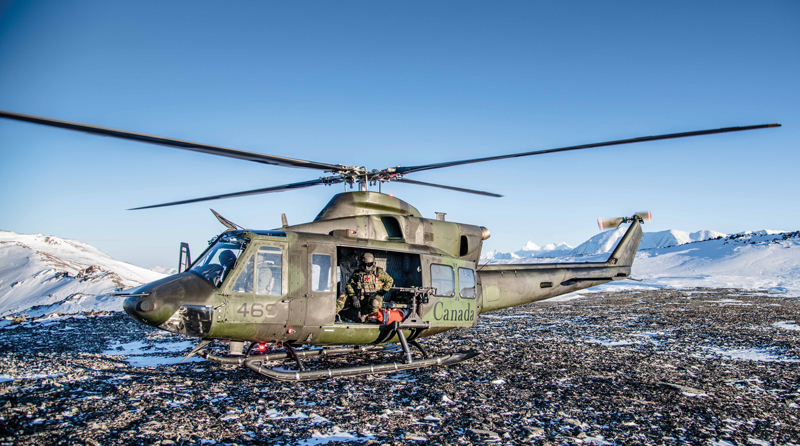
The Royal Canadian Air Force is working to extend the life of its 25-year-old-plus Griffon helicopters until at least the mid-2030s rather than replace them. [Corporal Angela Gore/Canadian Armed Forces Photo]
Canada needs to rebuild its military might
Today’s growing danger to global peace has not been as significant since the low points of the Cold War in the early 1960s. And the current instability is far more complex because in the 1960s (and for two decades after that) the greatest threat to world order came from the clash of interests between the Soviet Union and the United States. Now, China, Iran and North Korea, in addition to Russia, make everything more complicated.
However, one factor still stands out in defence planning for the U.S. and its allies: deterrence. By building a strong and credible deterrence, democracies can better ensure global stability. Deterrence obviously won’t bring real peace anywhere, but it will dissuade major war as it did for the four and a half decades of the Cold War.
What role should Canada play in establishing deterrence? The answer is simple: add to the deterrent power of the U.S. and other allies. How can Canada do that? By rejuvenating its military. It need not aim at building the Canadian Armed Forces into a major international military machine, but it does need to do more than it is doing and is planning to do during the next five years.
To really understand Canada’s current defence policy one needs to examine not what the government claims it’s doing, or is about to do, but what is actually happening. To begin, look at the defence budget announced by the government this past April. Despite hints from the minister of national defence that Canada would take bold steps to expand its military spending after the Russian attack on Ukraine, the actual increase in the budget was $8 billion over five years.
That was certainly a boost, but not a large one. If the government follows the plan laid out back in April, Canadian defence spending will rise to 1.59 per cent of the country’s gross domestic product (GDP) by 2026-27. That’s still below the two per cent of GDP target that Canada—and NATO—committed itself to in 2006, and reaffirmed in 2014 after the first Russian attack on Ukraine. Canada hasn’t lived up to that commitment since then. And it still won’t be close five years from now.
Does the two per cent target matter? As an article in the journal Foreign Policy pointed out this past June, that target is a political number that does not directly impact a country’s real defence capability. In other words, it’s not so important how much a nation spends, but what it is actually doing with its expenditure. But here, too, Canada is falling short.
For example, Canada’s sovereignty in its Arctic territory depends on a wide variety of Far North capabilities, including search-and-rescue, provisioning Arctic bases and settlements, and under-ice submarines. Canada has almost none of those now, nor will it have them in the next five years.
At the end of the Second World War, Canada’s navy was the world’s third largest. Now, the Global Naval Power Ranking has it 22nd, behind Greece, Thailand, Iran, Germany, Spain and even Bangladesh. Canada’s Halifax-class frigates are obsolete and their replacements are still on the drawing board. The Royal Canadian Navy’s submarines have been in active service since 2003 and have no under-ice capability. Naval supply ships are being built, but face a two-year delay and major cost increases.
Canada’s air force, meanwhile, will pull virtually even with those of its principal allies when it acquires the F-35 joint strike fighter (10 years too late and well behind its allies). In the meantime, Canada’s Griffon tactical helicopters are also out-of-date: they are civilian aircraft painted in military colours and need replacing. A 2017 Senate report recommended acquiring attack helicopters and modern tactical lift helicopters to replace the outmoded Griffons.
And the Canadian army is well below its ideal troop strength—
according to a military report, the army is short almost 7,600 members. Although there has been a marginal increase in recruitment advertising during the past year, it is nothing like the campaign carried out when Canada had a battle group in Afghanistan.
The army also has no modern anti-aircraft defence system.
It is commendable that the Canadian Armed Forces are playing a significant part in defending the Baltic countries and will be training Ukrainian soldiers in the United Kingdom—evidence Canada is contributing to common defence. But it’s not enough.
Defence is the most important duty of a government. Canada can do more.
Advertisement




















